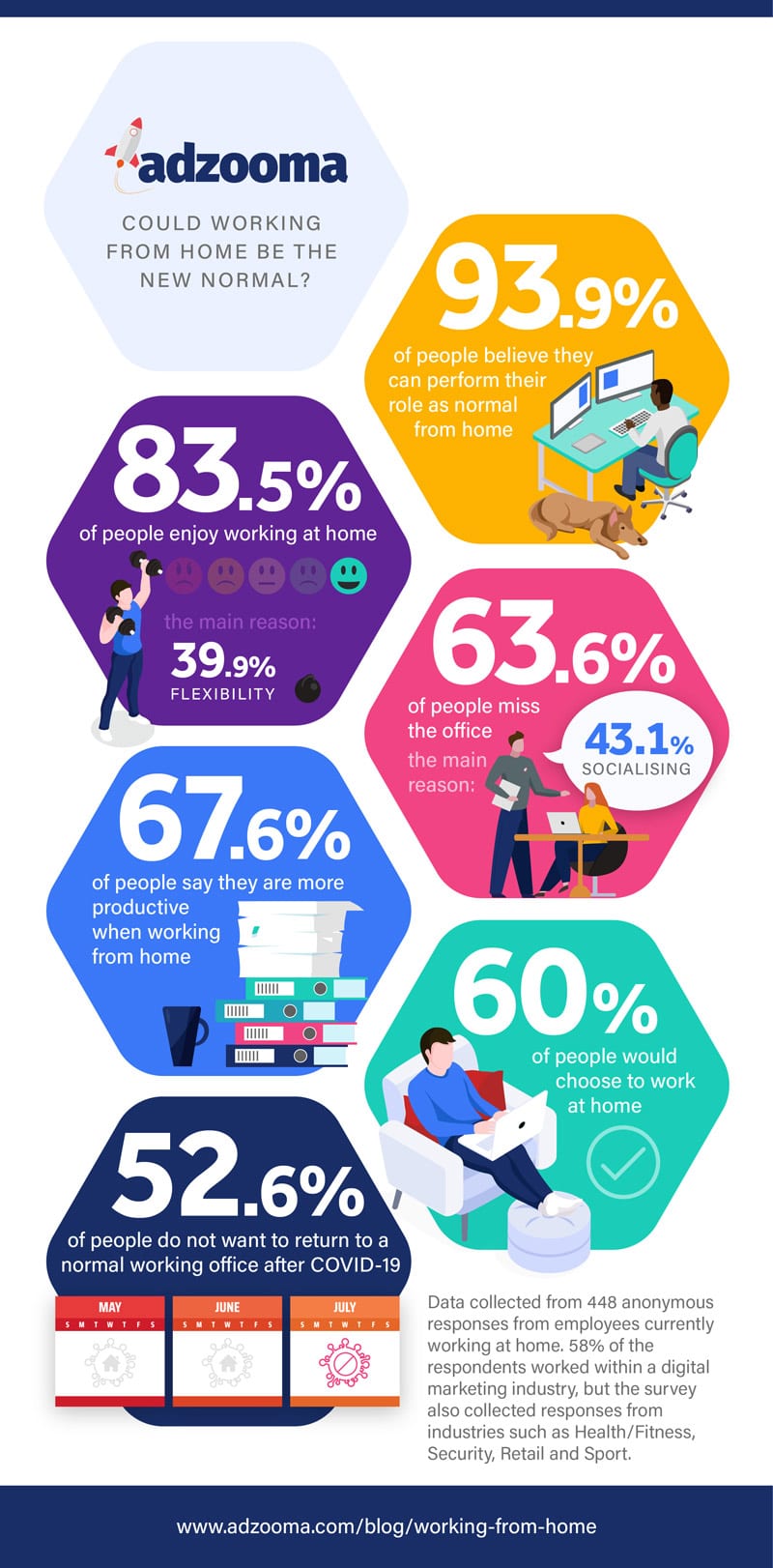2020 disrupted the world as we knew it. A global pandemic forced businesses across the globe to close their doors and work remotely as we all got used to a new way of living.
Some businesses have taken the change for good, as Shopify’s CEO Tobi Luke stated that “Shopify is a digital by default company” and Twitter announced employees would never have to go back to the office if they don’t want to.
They are among the first to announce a remote-first life. But they won’t be the last. New data by Adzooma has found that people might not want to go back to the way things were so quickly, indicating that we might be heading to a remote-first new world.
This is what they found:
67.6% more productive and happy at home
Employees aren’t just able to perform their job as normal at home; they’re exceeding expectations. When asked what the best part of home working was, 39.9% of people said flexibility.
Working at home means the option to talk to others and collaborate via communication apps or videos, but then also to disconnect and concentrate when it’s needed.
Home offices are a space that employees can fully control, allowing them to create the best and most productive work environments to fit their needs.
When talking about the best parts of working from home, 37.6% of people said the lack of commuting made all the difference, literally giving them hours back from their day. It’s a better work-life balance, which can contribute to better mental health.
The start of better mental health at work
Before COVID-19, data suggested that 66% of people thought that working at home would have a positive effect on their mental health.
Talking to psychotherapist Paul Ansorge from The Reach Approach, we asked what the positive effects working at home can have on mental health. He said that there are a number of obvious benefits, including “not having the stress of a commute, being able to have more relaxing sleep as there is less time pressure, and not having the stress of being observed all day and feel like you have to put on a show, especially if you’re struggling.”
In addition, people can have an easier time taking regular breaks.
However, Paul warns, “there are significant mental health benefits to socializing, so a friendly and supportive workplace can be good for a person’s well-being. While many people have suggested they enjoy benefits from working from home, there have certainly been significant numbers of people struggling with the lack of human contact brought about by the current circumstances.”
A flexible future
Working at home or in an office aren’t the only two options on the table. These are not either-or scenarios. In reality, the future of offices is most likely going to be a combination of both.
The majority of employees want remote work. But, it’s not for everyone, and there are a few instances when talking to someone face-to-face is the best option. As offices will have no choice but to implement social distancing measures as they open up, the most likely outcome after COVID-19 is a flexible working lifestyle.
For example, employees can work at home for the majority of the week, coming into the office for two days to meet others, socialize and brainstorm new ideas. This will allow businesses to downsize their space, switch to hot-desking, and keep meeting spaces for collaborations.
In terms of mental health, Paul Ansorge says that it’s not a simple debate about working at home versus in an office, either.
“It’s an immensely complex and vast subject and in the end depends on addressing the needs of the mind, body, spirit, and environment. If on an individual basis a person can best address those needs by working at home – for example, having an environment that feels uplifting and reassuring rather than one which feels oppressive, or making healthier eating choices, or using the time they would have to use for commuting for meditation, exercise or mindfulness type activities then it could certainly be of benefit.”
However, more flexible remote options would give employees the freedom to choose which style of work they prefer. It gives them a choice to have the structure and socializing aspect from the office, as well as the quiet space and time to work on themselves at home.

The opinions and views expressed in any guest blog post do not necessarily reflect those of www.rtor.org or its sponsor, Laurel House, Inc. The author and www.rtor.org have no affiliations with any products or services mentioned in the article or linked to therein. Guest Authors may have affiliations to products mentioned or linked to in their author bios only.






